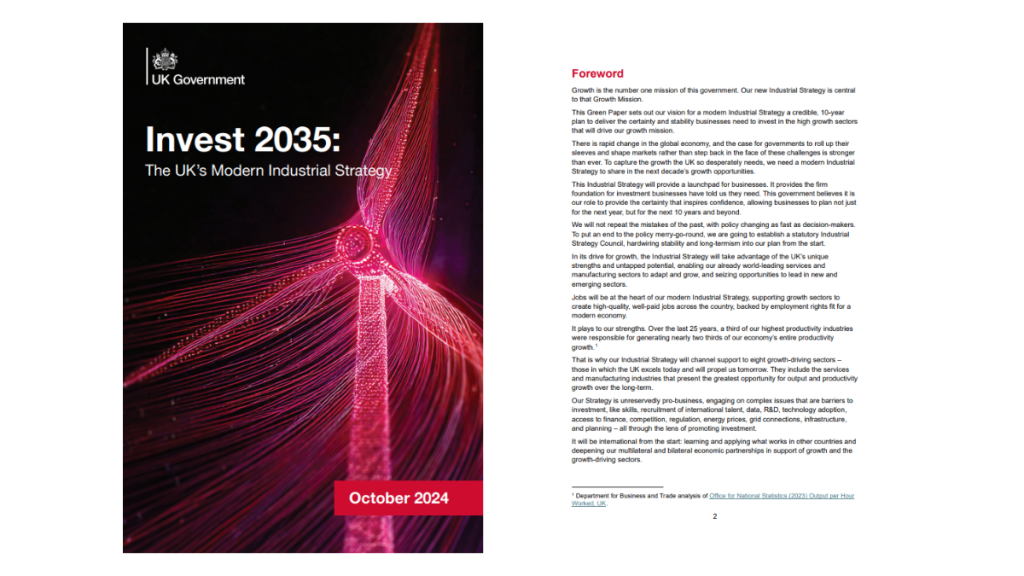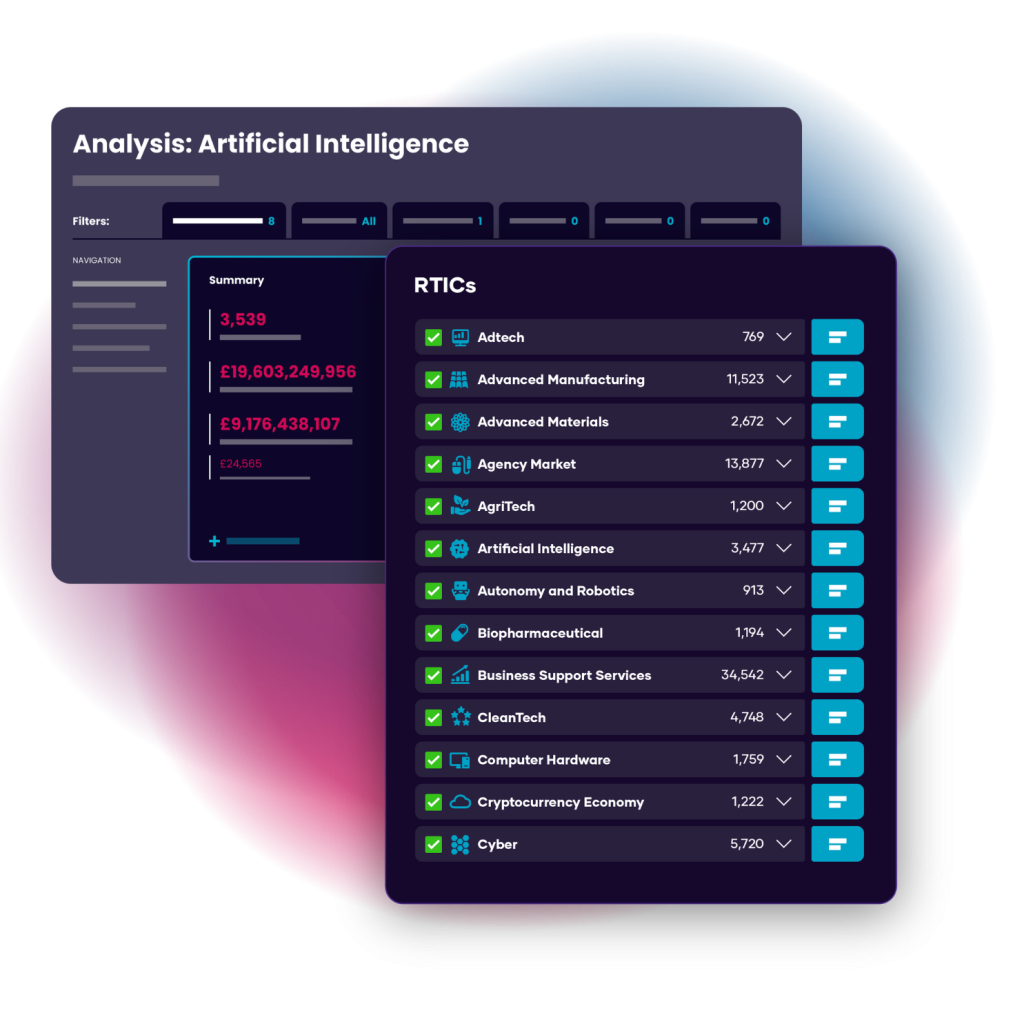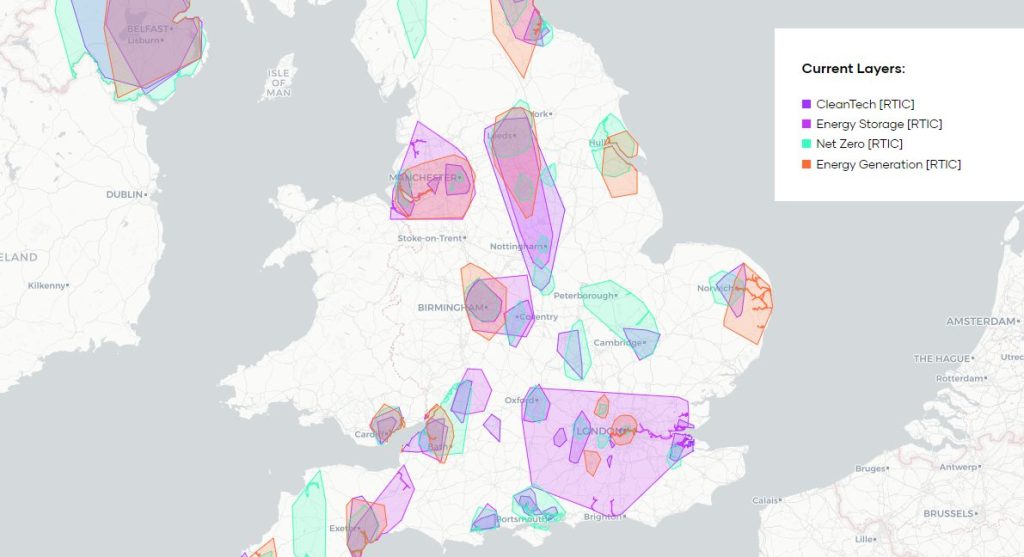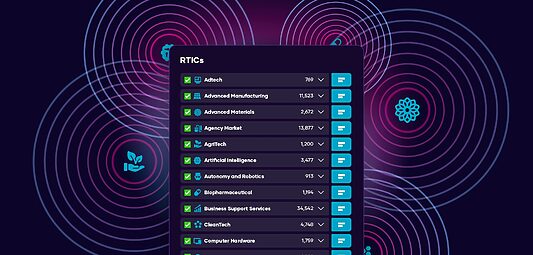At The Data City, we welcome the UK government’s Invest 2035 Industrial Strategy as a key step toward long-term economic growth, innovation, and sustainability.
In case you missed it, Business and Trade Secretary Jonathan Reynolds and Chancellor Rachel Reeves have launched a green paper, Invest 2035: The UK’s Modern Industrial Strategy, to kickstart this vision. One of the key questions posed is: How should the UK identify the most important subsectors for delivering growth?
We believe the answer lies in real-time, high-quality data. With its focus on growth-driving and emerging industries, the strategy emphasises the need for an evidence-based approach, something The Data City is well-placed to deliver.

Using our Real-Time Industry Classification (RTIC) system, we can help the government, investors and stakeholders pinpoint the key sectors driving future growth.
In this blog, we break down the strategy and share our response as part of the public consultation.
Key takeaways from Invest 2035
The Invest 2035 strategy green paper outlines the government’s plan to drive long-term economic growth across the UK by focusing on innovation and sustainability. Here are a few of key takeaways:
- Focus on 8 key sectors: The strategy highlights eight high-growth sectors critical to the future of the UK economy, including Advanced Manufacturing, Clean Energy, Digital Technologies, and Life Sciences.
- Supporting regional growth: A core element of the strategy is its place-based approach, which seeks to unlock the potential of cities, regions, and high-potential clusters across the UK.
- Pro-business environment: The strategy also commits to fostering a pro-business environment by addressing key barriers to investment, including skills, innovation and energy infrastructure.
- Partnership and long-term stability: The strategy will be developed in collaboration with businesses, trade unions, regional leaders, and international partners, ensuring that it is informed by practical insights from across sectors.
- Improving data and evidence: Recognising the limitations of outdated classification systems like SIC codes, the strategy calls for a high-quality evidence base to better track these sectors and their development.
Addressing the limitations of SIC Codes
One of the key issues highlighted in the Invest 2035 strategy is the inability of outdated Standard Industrial Classification (SIC) codes (page 19) to adequately track the 8 high-growth sectors that will shape the future of the UK economy:
- Advanced Manufacturing
- Clean Energy Industries
- Creative Industries
- Defence
- Digital and Technologies
- Financial Services
- Life Sciences
- Professional and Business Services
SIC codes are not equipped to capture the dynamic and evolving nature of these industries.

The Data City has already mapped many of these sectors using our Real-Time Industry Classification (RTIC) system, including sectors like Advanced Manufacturing, Life Sciences, CleanTech, Digital Creative Industries, FinTech, and other technical and digital industries.
Our RTICs offer real-time data on what companies are doing now, providing an accurate and up-to-date understanding of how sectors are performing, evolving, and contributing to the economy.

Coordinating a shared evidence base
At The Data City, we see a strong need for a high-quality, coordinated evidence base that can be shared across government departments and other stakeholders.
Access to consistent, reliable data will ensure that decision-making is well-informed and aligned. The green paper emphasises that achieving the government’s ambitions will require partnership across businesses, trade unions, local leaders, experts, and international partners. We believe our RTIC system can help create this shared evidence base, supporting both the Industrial Strategy and the growth-driving Sector Plans that will be published alongside the Spending Review in Spring 2025.
Many stakeholders are already using our data, and by aligning their efforts around a shared platform, we can ensure decisions are based on the most accurate information available.
Identifying and supporting high-potential clusters
A core element of the strategy is its focus on high-potential clusters across the UK. These clusters offer significant place-based opportunities for regional growth, but identifying and supporting them can be complex.
Working closely with DSIT, Cambridge Econometrics, and other partners, we already have access to data through the Innovation Clusters Map, an open dataset helping policymakers identify high-potential clusters. However, there is more to be done to make the identification and analysis of clusters more accessible, especially for local authorities and those developing Local Growth Plans.

Moving forward we believe the Innovation Clusters Map will continue to provide value to policymakers, economists and investors, but we will also be doing more to provide cluster analysis tools to stakeholders.
The Data City is launching a cluster mapping tool that will provide detailed insights into high-potential areas across the country. By linking this data to productivity indicators, we aim to help local and national authorities identify where targeted support and investment will have the greatest impact.
Answering key questions
The public consultation for Invest 2035 poses three important questions (found on page 20 of the paper):
- How should the UK government identify the most important subsectors?
- How should the government account for emerging sectors and technologies?
- How should the government incorporate foundational sectors and value chains into its analysis?
Here’s how we can contribute:
- Identifying subsectors: Our RTIC system allows us to break down the 8 key sectors into sub-verticals, providing a clearer view of which subsectors are driving growth and innovation.
- Tracking emerging sectors: We monitor emerging sectors and technologies in real time, giving the government the ability to stay ahead of trends that traditional classification systems might miss.
- Mapping value chains: By mapping the connections between high-growth industries and foundational sectors, we offer a detailed view of how sectors support each other, helping to guide policies that strengthen these relationships.
What’s next?
At The Data City, we are aligned with the goals of the Invest 2035 Industrial Strategy.
We are committed to contributing to the creation of a high-quality, shared evidence base that will support growth, innovation, and sustainability across the UK. Our work on mapping sectors, identifying high-potential clusters, and tracking emerging industries provides the real-time data needed to inform effective decision-making.
As we continue to work with DBT, DSIT, and other partners, we look forward to playing a key role in delivering the strategy’s vision for the future of the UK economy.
What do you think of the Invest 2035 green paper? We’d love to hear your thoughts and how we can work together to support the UK’s growth plans.


